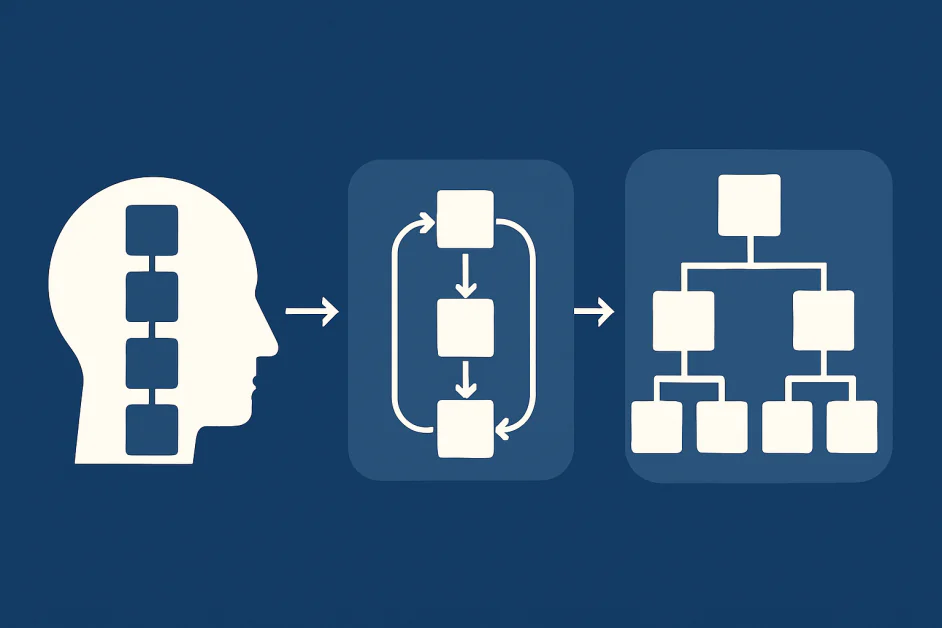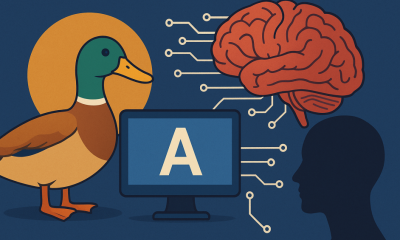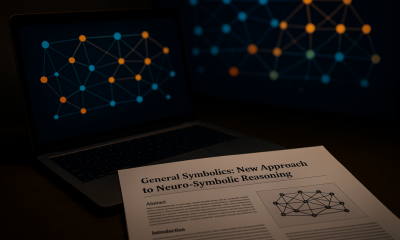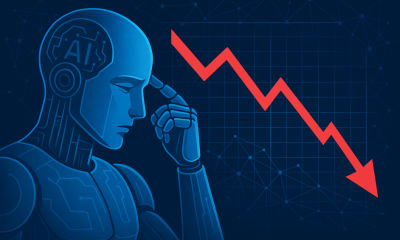Artificial Intelligence
Evolution of AI Reasoning: From Chains to Iterative and Hierarchical Strategies

For the last few years, chain-of-thought prompting has become the central method for reasoning in large language models. By encouraging models to “think aloud,” researchers found that step-by-step explanations improve accuracy in areas like math and logic. However, as tasks grow more complex, the limits of CoT become clear. The reliance of CoT on carefully chosen examples of reasoning makes it difficult to handle tasks that are either too simple or more difficult than those examples. While CoT introduced structured thinking to language models, the field now demands more new approaches that can handle complex, multi-step problems with varying complexities. As a result, researchers are now exploring new strategies such as iterative and hierarchical reasoning. These methods aim to make reasoning deeper, more efficient, and more robust. This article explains the limits of CoT, explores evolution of CoT, and looks at applications, challenges, and future directions for scaling AI reasoning.
The Limits of Chain-of-Thought
CoT reasoning helped models to handle complex tasks by breaking them into smaller steps. This ability not only improved benchmark results in math contests, logic puzzles, and programming tasks but also provides some transparency by exposing intermediate steps. Despite these benefits, however, CoT is not without its challenges. Research shows that CoT works best on problems that require symbolic reasoning or precise calculation. However, for open-ended questions, commonsense reasoning, or factual recall, it often adds little or even reduces accuracy.
CoT is essentially linear in its nature. The model generates a single sequence of steps that leads to an answer. This works well for short, well-defined problems, but struggles when tasks require deeper exploration. Additionally, complex reasoning often involves branching, backtracking, and revisiting assumptions. A single linear chain cannot capture this. If the model makes an early mistake, all following steps collapse. Even when the reasoning is correct, linear outputs cannot adapt to new information or recheck earlier assumptions. Real-world reasoning requires flexibility that CoT does not provide.
Researchers also highlight scaling problems. As models face harder tasks, the chains become longer and more fragile. Sampling multiple chains can help, but it quickly becomes inefficient. The question is how to move from narrow, single-path reasoning to more robust strategies.
Iterative Reasoning as a Next Step
One promising direction is iteration. Instead of producing a final answer in one pass, the model engages in cycles of reasoning, evaluation, and refinement. This mirrors how people solve difficult problems by first drafting a solution, checking it, identifying weaknesses, and improving it step by step.
Iterative methods allow models to recover from mistakes and explore alternative solutions. They create a feedback loop where the model critiques its own reasoning, or where multiple models critique each other. One powerful idea is self-consistency. Instead of trusting one chain of thought, the model samples many reasoning paths and then picks the most common answer. This mimics a student trying the problem several ways before trusting an answer. Research showed that aggregating multiple reasoning paths improves reliability. More recent work extends this idea into structured iterations where outputs are repeatedly checked, corrected, and expanded.
This ability also enables models to use external tools. Iteration makes it easier to integrate search engines, solvers, or memory systems into the loop. Instead of committing to one answer, the model can query external resources, reconsider its reasoning, and revise its steps. Iteration turns reasoning into a dynamic process rather than a static chain.
Hierarchical Approaches to Complexity
Iteration alone is not enough when tasks grow very large. For problems that require long horizons or multi-stage planning, hierarchy becomes essential. Humans use hierarchical reasoning all the time. We break tasks into subproblems, set goals, and work through them in structured layers. Models need the same ability.
Hierarchical methods allow a model to decompose a task into smaller steps and solve them in parallel or in sequence. Research on program-of-thought and tree-of-thoughts highlights this direction. Instead of a flat chain, reasoning is organized as a tree or graph where multiple paths can be explored and pruned. This makes it possible to search through different strategies and select the most promising one. In this direction, a new development is the Forest-of-Thought framework, which launches many reasoning “trees” at once and uses consensus and error-correction across them. Each tree can explore a different path; trees that appear unpromising are pruned, while self-correction mechanisms let the model spot and fix errors in any branch. By combining votes from all trees, the model makes a collective decision.
Hierarchy also enables coordination. Large tasks can be distributed across agents that handle different parts of the problem. One agent may focus on planning, another on computation, and another on verification. The results can then be integrated into a coherent single solution. Early experiments in multi-agent reasoning suggest that such division of labor can outperform single-chain methods.
Verification and Reliability
Another strength of iterative and hierarchical strategies is that they naturally allow verification. Chain-of-thought exposes reasoning steps, but it does not guarantee their correctness. With iterative loops, models can check their own steps or have them checked by other models. With hierarchy, different levels can be verified independently.
This opens the door to structured evaluation pipelines. For example, a model might generate candidate solutions at a lower level, while a higher-level controller selects or refines them. Or an external verifier could test outputs against constraints before accepting them. These mechanisms make reasoning less brittle and more trustworthy.
Verification is not only about accuracy. It also improves interpretability. By organizing reasoning into layers or iterations, researchers can more easily inspect where failures occur. This supports both debugging and alignment, giving developers more control over how models reason.
Applications
Advanced reasoning strategies are already in use across fields. In science, they support problem-solving in advanced mathematics and even help draft research proposals. In programming, models now perform well in competitive coding, debugging, and full software development cycles.
Legal and business domains benefit from complex contract analysis and strategic planning. Agentic AI systems combine reasoning with tool use, managing multi-step operations across APIs, databases, and the web. In education, tutoring systems can explain concepts step by step and provide personalized guidance.
Challenges and Open Questions
Despite the promise of iterative and hierarchical methods, there are still many challenges to be addressed. One is efficiency. Iterative loops and tree searches can be computationally expensive. Balancing thoroughness with speed is an open problem.
Another challenge is control. Ensuring that models follow useful strategies rather than drifting into unproductive loops is difficult. Researchers are exploring methods to guide reasoning with heuristics, planning algorithms, or learned controllers, but the field is still young.
Evaluation is also an open question. Traditional accuracy benchmarks capture only results, not the quality of reasoning processes. New evaluation frameworks are needed to measure robustness, adaptability, and transparency of reasoning strategies.
Finally, there are alignment concerns. Iterative and hierarchical reasoning may amplify both strengths and weaknesses of models. While they can make reasoning more reliable, they also make it harder to predict how models will behave in open-ended scenarios. Careful design and oversight are necessary to avoid new risks.
The Bottom Line
Chain-of-thought opened the door to structured reasoning in AI, but its linear limits are clear. The future lies in iterative and hierarchical strategies that make reasoning more adaptive, verifiable, and scalable. By using cycles of refinement and layered problem-solving, AI can move from fragile step-by-step chains to robust, dynamic reasoning systems capable of tackling real-world complexity.












